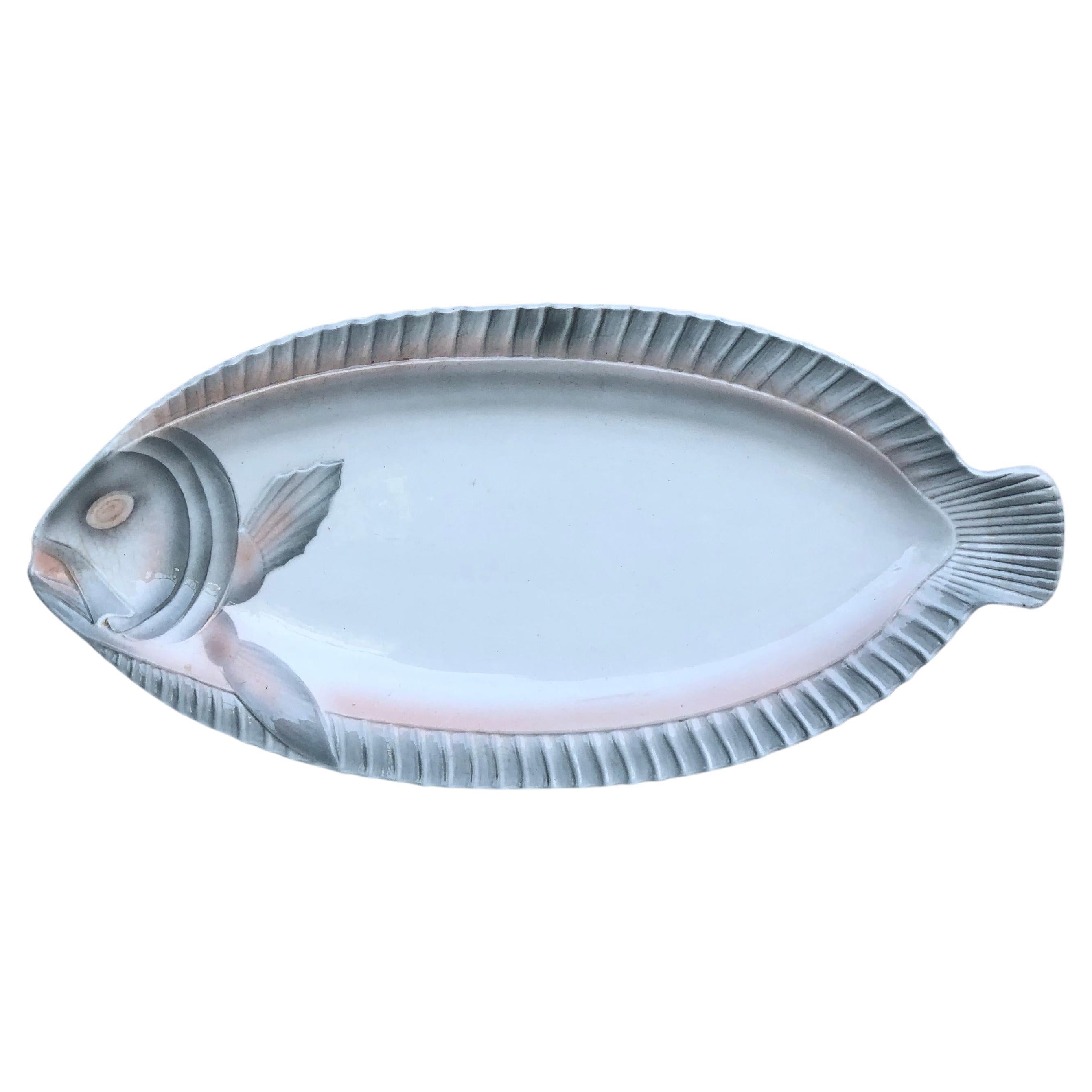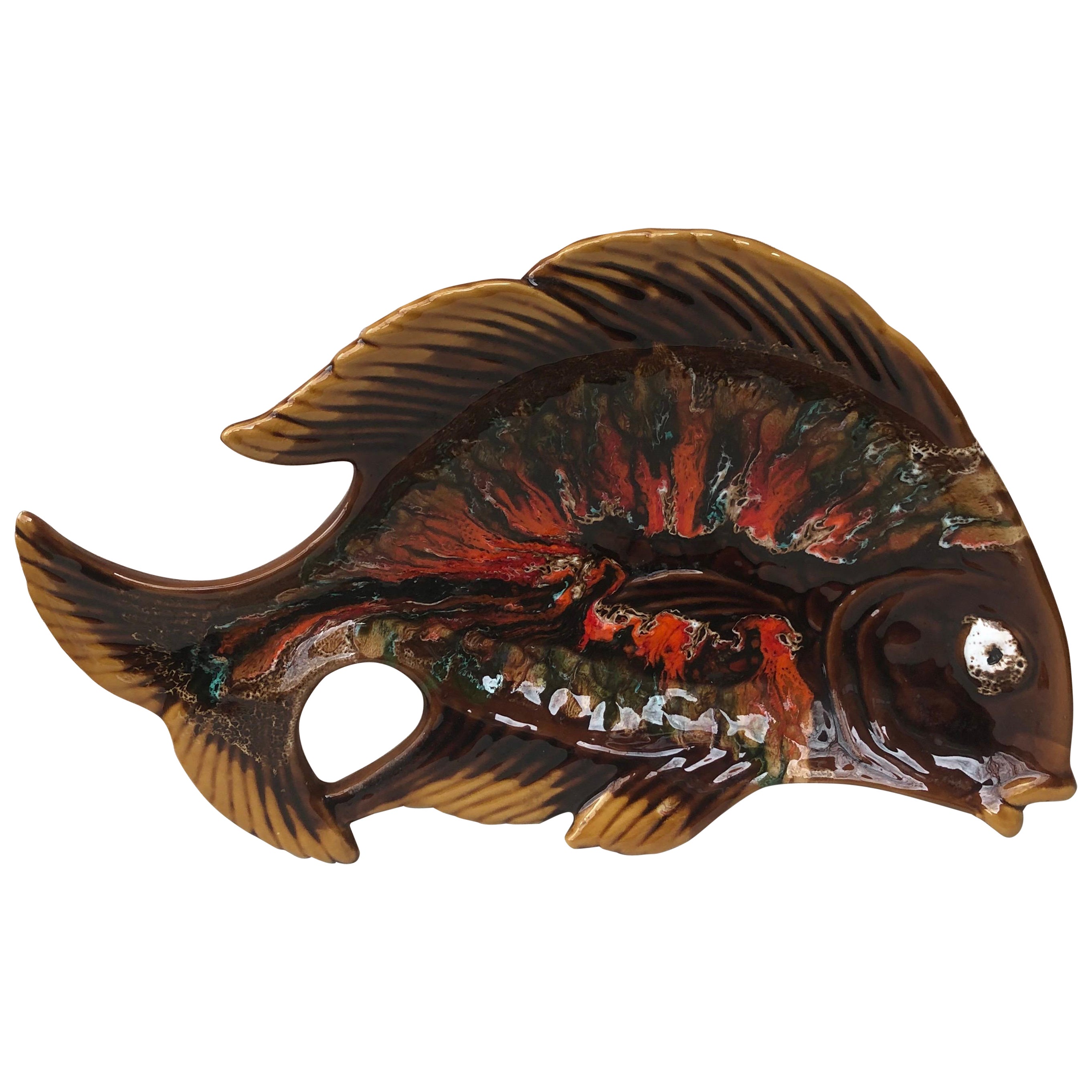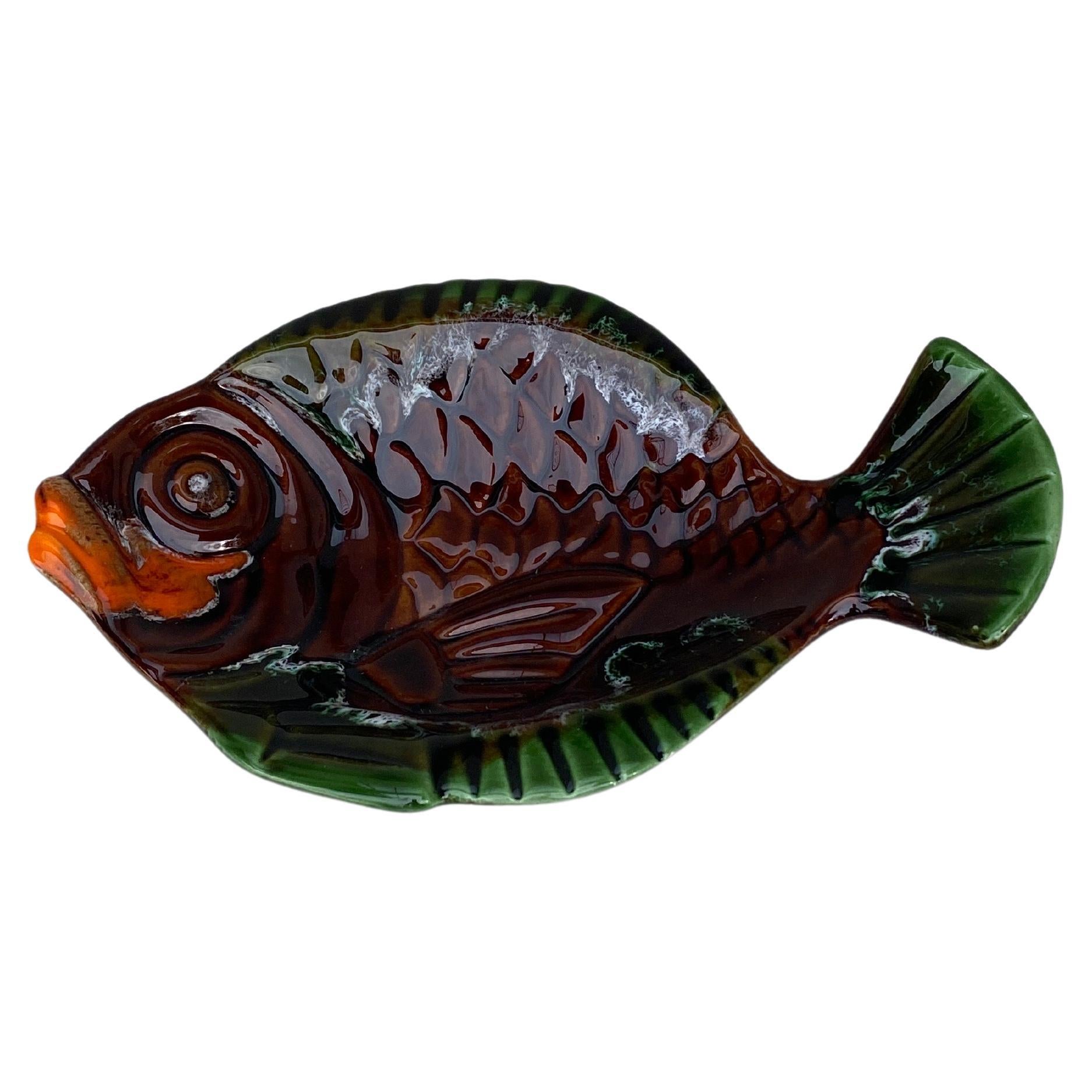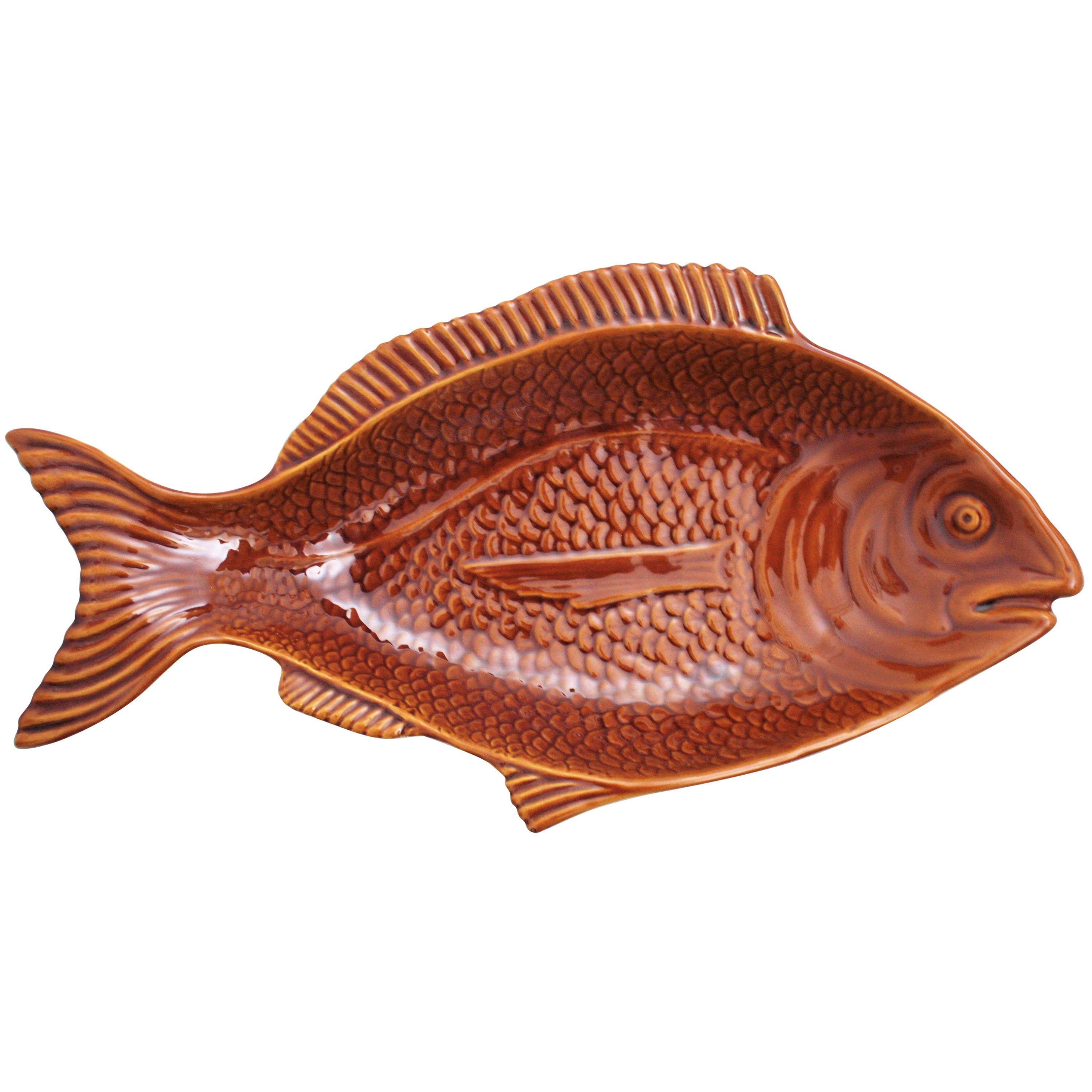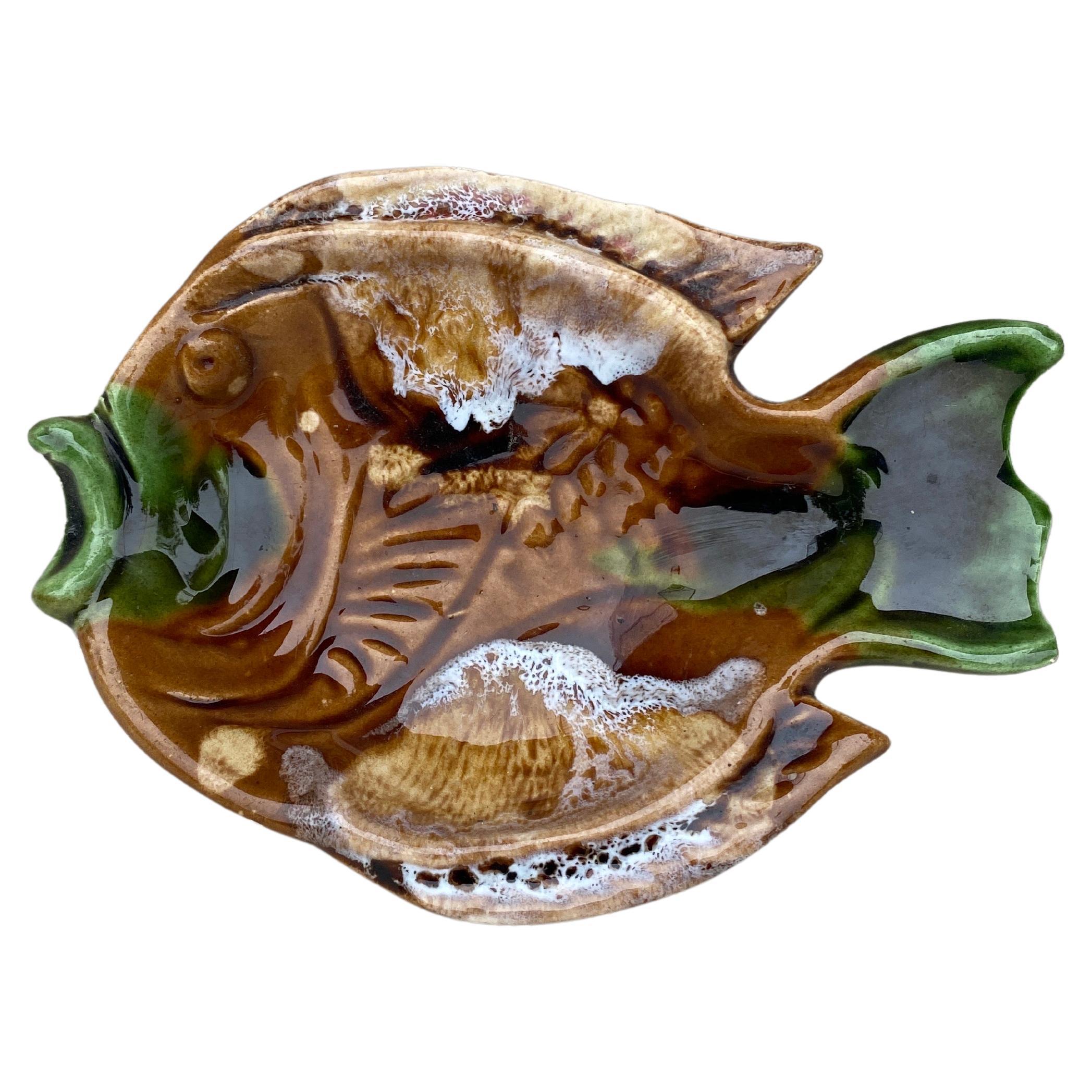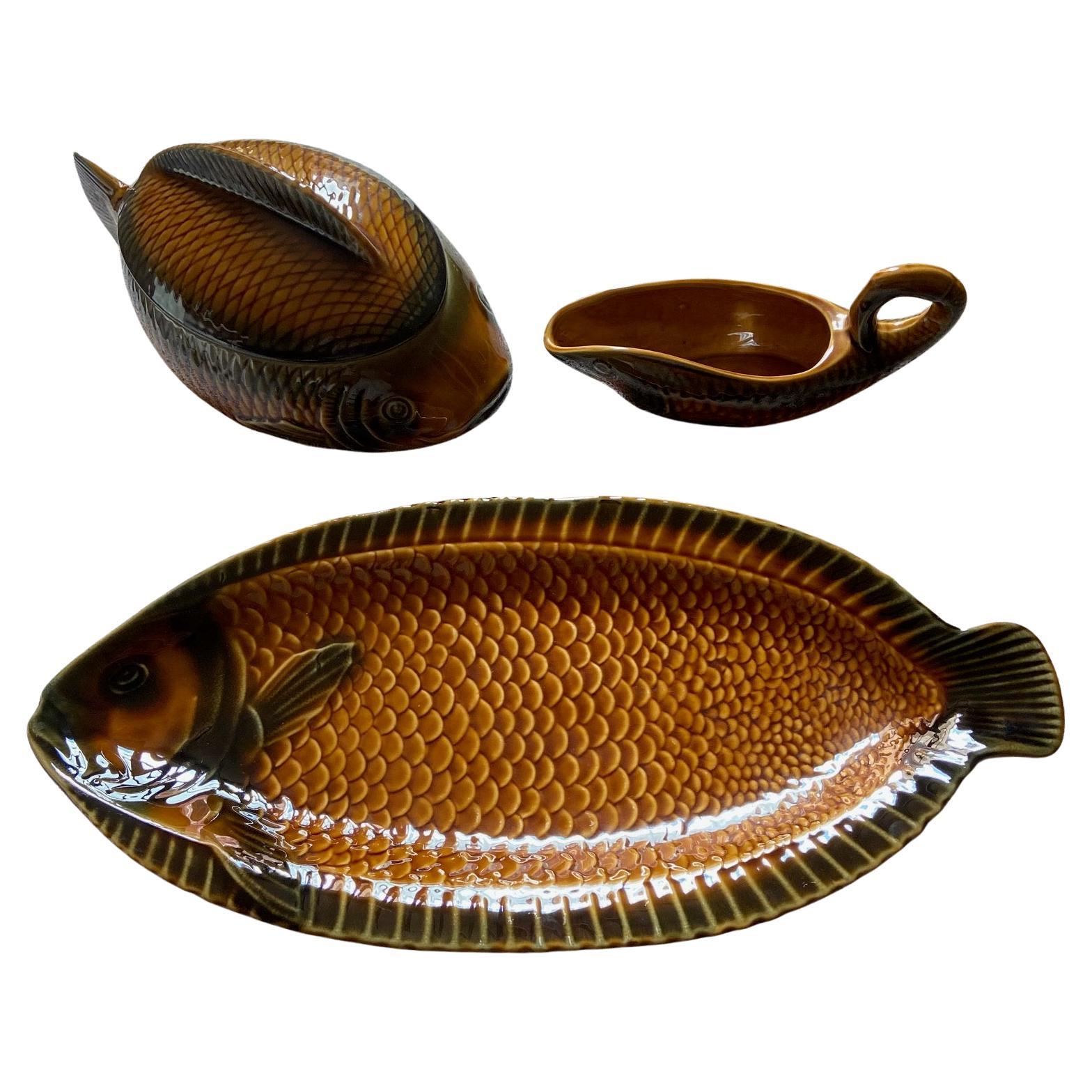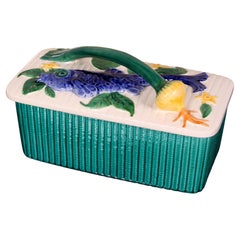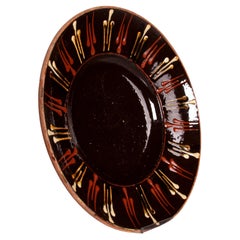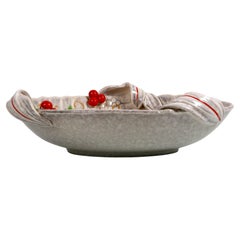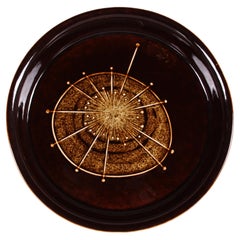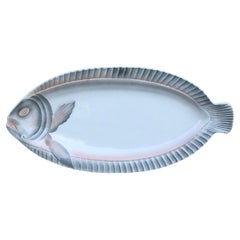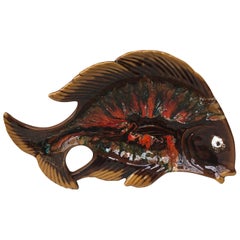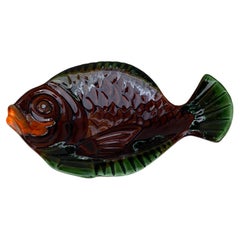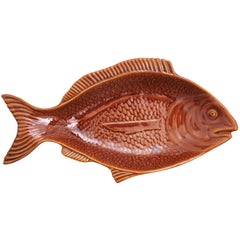Items Similar to huge French Majolica Fish Platter Sarreguemines 1950s in very good condition
Want more images or videos?
Request additional images or videos from the seller
1 of 15
huge French Majolica Fish Platter Sarreguemines 1950s in very good condition
$333.72
£247.12
€280
CA$458.92
A$510.44
CHF 267.15
MX$6,225.65
NOK 3,356.86
SEK 3,157.56
DKK 2,131.73
About the Item
huge French Majolica Fish Platter
Sarreguemines 1950s
in very good condition
German : Saargemünd / French Sarreguemines) is situated in the north-east of France, on the border with the German state of Saarland, at an altitude of 222 metres. At Saargemünd, the Blies flows into the Saar, which is connected to the Canal de la Marne au Rhin via the Saar Canal. The name is derived from the German word Gemund (Mouth ) Latinised gemundia in old documents) and refers to the confluence of the Saar and Blies rivers within the city limits.
The historical tradition of pottery and maiolica:
Around 1790, three men from Strasbourg set up a pottery in an old mill in Saargemünd. In 1799, the young Paul Utzschneider, who had come from Bavaria, bought the shares of two of the partners and founded the company Fabry Utzschneider et companie with the third, Joseph Fabry. Paul Utzschneider expanded production and by the end of the year employed 170 workers in 7 kilns. Aided by the continental blockade, he began to imitate English stoneware, especially Wedgwood with its exotic decorations. He also introduced new types of very fine earthenware to compete with porcelain. In 1836 he handed over production to his son-in-law, Baron Alexandre de Geiger. The factory employed 300 workers and the kilns were coal-fired. To expand and modernise the factory, he formed an alliance with the Villeroy and Boch families in neighbouring Saarland. Between 1858 and 1869, he transformed the manufactory into an industrial factory. He also began to produce majolica, coloured tiles in the Italian-Moorish style. After the annexation of Alsace-Lorraine in 1871, he left the city and moved to Paris, handing over the business to his son Paul, who had joined the company in 1859 and managed individual factories. As exports to France were subject to a 15% tax, he set up a new factory in Digoin (France) and a little later a new warehouse in Vitry-le-François. In 1890, he began to produce architectural ceramics, colourful ceramic elements used to decorate prestigious buildings. They can still be seen today at the Casino and the Musée de la Faïence in Saargemünd.
Plates from the Utzschneider stoneware factory, 1900-1925.
In 1913, the transitional period for former French companies in Lorraine expired and they had to decide whether they wanted to remain French or become German. Paul de Geiger decided to create 2 new companies: La Société Utzschneider et Compagnie in Saargemünd and Les Etablissements céramiques Digoin, Vitry-le-François et Paris in France. He died shortly afterwards. After the war, Lorraine became French again and the two companies merged under the name Faïenceries de Sarreguemines Digoin et Vitry-le-François. Until the Second World War, production was expanded and new buildings were constructed. In 1939, Sarreguemines was evacuated and production ceased. The factory was reopened by the German occupying forces in 1940 and taken over by Villeroy & Boch in 1942. After liberation in 1944, Saargemünd lay in ruins, as did the Utzschneider factories. Production was resumed using more modern processes such as tunnel kilns. Economic problems arose and in 1979 the company was taken over by competitor Lunéville Saint-Clément, with the Saargemünd part trading under the name of Sarreguemines bâtiment. Production in Saargemünd ceased and the Sarreguemines brand of stoneware is now (2021) produced in Digoin and Saint-Clément.
- Creator:Sarreguemines (Maker)
- Dimensions:Height: 1.38 in (3.5 cm)Width: 21.46 in (54.5 cm)Depth: 10.24 in (26 cm)
- Materials and Techniques:Maiolica,Glazed
- Place of Origin:
- Period:
- Date of Manufacture:1950-1958
- Condition:
- Seller Location:Landshut, DE
- Reference Number:1stDibs: LU8587241869502
About the Seller
5.0
Vetted Professional Seller
Every seller passes strict standards for authenticity and reliability
1stDibs seller since 2023
21 sales on 1stDibs
- ShippingRetrieving quote...Shipping from: Bodenkirchen , Germany
- Return Policy
Authenticity Guarantee
In the unlikely event there’s an issue with an item’s authenticity, contact us within 1 year for a full refund. DetailsMoney-Back Guarantee
If your item is not as described, is damaged in transit, or does not arrive, contact us within 7 days for a full refund. Details24-Hour Cancellation
You have a 24-hour grace period in which to reconsider your purchase, with no questions asked.Vetted Professional Sellers
Our world-class sellers must adhere to strict standards for service and quality, maintaining the integrity of our listings.Price-Match Guarantee
If you find that a seller listed the same item for a lower price elsewhere, we’ll match it.Trusted Global Delivery
Our best-in-class carrier network provides specialized shipping options worldwide, including custom delivery.More From This Seller
View Allmidcentury SCHRAMBERG MAIOLICA box Barbotine FISH TUREEN TERRINE handpainted
By Schramberg Majolica
Located in Landshut, BY
midcentury
SCHRAMBERG MAIOLICA
Barbotine
FISH TUREEN TERRINE
handpainted
Design Period 1955 to 1965
Production Period around 1960
Country of Manufacture Germany
H / height: 11cm both ~ Gew. / weight: 2950grs
DM / diameter casserole : 30 cm x 15cm x 11cm high ~ 19cm with its lid
MARKED: Schramberger Majolikafabrik 5624
:-: fair condition with some very small chips (see photos)
- Considering the sensitive material I would even say it is in good condition
-- let´s call it charming vintage :-:
To ensure a safe arrival, this item is packed in super-safe packaging.
(up to 10 Kg)
SMF SCHRAMBERG was originally founded in 1820 as Faist'sche Steingutfabrik by the stoneware expert Isidor Faist on the site of the abandoned Schramberg castle. By 1829, Faist and his factory had gained such a good reputation that Baron Ferdinand von Uechtritz became his partner under the new name of Steingut- und Majolikafabrik Uechtritz & Faist. With the Baron's financial support, the partners were able to build a new factory behind the castle, which dramatically increased production. By the 1860s, the company had a permanent workforce of 100 and an impressive number of almost 6,000 homeworkers (decorators, etc.), mainly children and women. From 1882, Faist began taking orders from Villeroy & Boch, who eventually bought the Schramberg pottery in 1883 and continued to operate it as a V&B subsidiary until the early 20th century. In 1911, several of the factory buildings had to be demolished to make way for the local railway, which drastically reduced production and caused Villeroy & Boch to lose interest in the site, which they sold to brothers Moritz and Leopold Meyer in 1912. It was the Meyers who introduced the "SMF" trademark and eventually gave the company its permanent name, Schramberger Majolika-Fabrik. In 1918 the company was transformed from a sole proprietorship to a limited liability company and the transformation was complete.
The Meyer brothers were always on the lookout for new talent, and many famous artists joined the factory or contributed designs in the years that followed. Their decorative ceramics, stylized in vibrant colours, attracted much attention in the 1920s.
Eva Stricker-Zeisel was a prominent designer for the company from 1928 to 1930. Her designs were strongly influenced by the Bauhaus movement and her modern form and decoration designs gave an avant-garde look to part of the production programme. As well as designing the shapes, Eva Zeisel also supplied the intended decorations for the pieces, although the decoration department often adapted her decorations to shapes for which they were not intended. They would even use them on shapes other than those designed by Zeisel and apply decors not designed by her to her shapes. This particularly happened with the very popular 'Mondrian' pattern, which often appeared on non-Zeisel shapes. The factory continued to produce Zeisel's designs for some time after her departure, but she sometimes felt that the designs were not exactly as she had intended.
With the economic crisis of the early 1930s, the focus of production shifted to tableware and utilitarian ceramics, until the Nazis forced Moritz and Leopold Meyer to sell the factory in 1938 as part of the forced aryanisation of the German state. Both emigrated to England with their families during the war, but in 1949 Peter Meyer...
Category
Mid-20th Century German Mid-Century Modern Tableware
Materials
Maiolica
Antique traditional French Art Pottery Bowl (also wall plate) France ar. 1900
Located in Landshut, BY
Traditional French Plate / Bowl
(can be perfectly fitted as a wall plate - using handle to hang)
Manufactured in France
around 1900
Production Period around 1900
marked: "3"
...
Category
Antique Late 19th Century French Folk Art Ceramics
Materials
Pottery
art deco huge Ø33cm! fruit bowl plate hand made in France ar. 1930 - very rare
Located in Landshut, BY
art deco
huge Ø33cm! fruit bowl
hand made in France ar. 1930 - very rare
in perfect condition
Category
Vintage 1930s French Art Deco Ceramics
Materials
Pottery
Hertha Bengtson Rörstrand Sweden a splendid fruit bowl with an impressive design
By Hertha Bengtson
Located in Landshut, BY
Hertha Bengtson
for Rörstrand Sweden
a splendid fruit bowl with an impressive design
Ø 35cm ~ height: 5.5cm ~ weight: 2312 grs
Hertha Bengtson
Bengtson studied at the Konstfack Sc...
Category
Mid-20th Century Swedish Mid-Century Modern Platters and Serveware
Materials
Ceramic
art deco huge Ø32cm! glass rosé colored Bohemian Fruit Bowl plate ar. 1930
Located in Landshut, BY
art deco
huge Ø32cm!
rosé colored glass
Bohemian Fruit Bowl
Category
Vintage 1930s Czech Art Deco Ceramics
Materials
Stained Glass
THUN Bozen South Tirol huge wall plate Italy traditional pottery hand painted
Located in Landshut, BY
Huge (Ø 33cm) and heavy (1521grs)
Traditional South Tyrolian Wall Plate
Manufactured by THUN Bozen
History of the company
The company was founded in 1950 by Count Otmar and Cou...
Category
20th Century Italian Folk Art Ceramics
Materials
Pottery
You May Also Like
French Majolica Fish Platter Sarreguemines Circa 1930
By Sarreguemines
Located in Austin, TX
Large French Majolica fish platter signed Sarreguemines Circa 1930.
Measures: 21 inches Lenght.
Category
Vintage 1930s French Art Deco Platters and Serveware
Materials
Ceramic
Large French Majolica Fish Platter Vallauris, Circa 1950
By Vallauris
Located in Austin, TX
Large French Majolica fish Platter signed Vallauris, Circa 1950.
Measures: 18 inches by 10.5 inches.
Category
Vintage 1950s French Mid-Century Modern Platters and Serveware
Materials
Ceramic
French Majolica Fish Platter Vallauris, Circa 1950
By Vallauris
Located in Austin, TX
French Majolica fish platter Vallauris Circa 1950.
Category
Vintage 1950s French Mid-Century Modern Decorative Art
Materials
Ceramic
Large Majolica Ceramic Fish Platter by Secla, 1960
By Secla
Located in Barcelona, ES
A glazed ceramic large fish platter in brown and toffee colors manufactured by Secla ceramics factory. Portugal, 1960s.
A very interesting piece du...
Category
Mid-20th Century Portuguese Mid-Century Modern Platters and Serveware
Materials
Majolica, Ceramic
$1,048 Sale Price
20% Off
Small French Majolica Fish Platter Vallauris, Circa 1950
By Vallauris
Located in Austin, TX
Small French Majolica fish platter Vallauris Circa 1950.
Category
Vintage 1950s French Mid-Century Modern Decorative Art
Materials
Ceramic
Majolica Sarreguemines Fish Service, 1950s, set of 3
By Sarreguemines
Located in ASNIÈRES-SUR-SEINE, FR
Stunning Sarreguemines serving fish set.
XL platter and an incredible tureen for potatoes or vegetables.
- One platter: 21 X 9,8 inch
- One tureen: 11,8 X 6,3 inch
- One gravy boat:...
Category
Vintage 1950s French French Provincial Platters and Serveware
Materials
Ceramic
More Ways To Browse
French Fish Plates
Majolica Fish
German Tile
French Majolica Pottery
The Continental Furniture Company
English Silver Fish
German Fish Set
Majolica Tiles
French Coal
Majolica Fish Platter
Bavaria Plates Vintage
German Fish Plates
Fish Plate English
Continental Pottery
Ceramic Fish Tile
1790 English Porcelain
Majolica Fish Plates
Continental Silver Company
